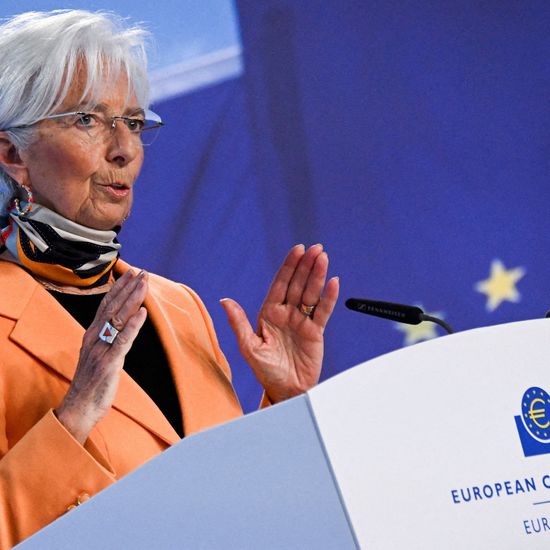By Mark Schroers And Jana Randow
The ECB confirmed yesterday that it will take a symmetric approach to keeping price growth at that level over the medium term, and said it will use an “appropriately forceful or persistent policy response” to large and lasting deviations in either direction.
That is a shift from its findings four years ago, when policymakers committed to taking “especially forceful or persistent” action to avoid too-low inflation becoming entrenched when the economy is “close to the lower bound”.
The change, unveiled as officials gather for their annual retreat in Sintra, Portugal, comes in response to the unprecedented surge of inflation in 2021 and 2022 that caught the ECB off guard and sparked criticism that it was too late in raising interest rates.
Officials kicked off their review last summer, aiming to prepare for an environment that looks set to serve up more frequent and disruptive economic shocks due to factors such as de-globalisation, decarbonisation and demography.
“The virtue of this exercise” is “that it’s a strategy for all circumstances,” ECB president Christine Lagarde told a press conference. She conceded that the previous assessment was less forward looking and more influenced by the ECB’s past experience.
In the US, the Federal Reserve is also re-evaluating how it sets and communicates monetary policy amid criticism that its 2020 framework of “flexible average inflation targeting” contributed to underestimating the severity of the following inflation burst and the slowness in raising rates.
It is proceeding as US president Donald Trump offers regular reminders with frequent policy shifts, especially on trade, of how quickly the outlook can change.
The ECB’s review concluded that structural shifts in the global economy such as geopolitical and economic fragmentation, and the increasing use of artificial intelligence, make the inflation environment more uncertain.
To better account for risks and uncertainty to the inflation and economic outlook, it will make “appropriate use” of scenarios and sensitivity analyses.
“This assessment was a valuable opportunity to challenge our thinking, check our policy toolkit and fine-tune our strategy,” Ms Lagarde said in a statement.
“It provides us with an even stronger basis to conduct monetary policy and fulfill our mandate of price stability in an increasingly uncertain environment.”
Policymakers decided to keep all tools in their kit, though agreed that they would conduct a “comprehensive proportionality assessment” before putting them to use. They said that whenever two alternative instruments can deliver similar results, implications for the ECB’s balance sheet should be considered.
Central banks across the 20-nation euro zone have faced painful losses as a result of large-scale bond purchases that have led to calls to rethink the viability of quantitative easing as a policy instrument. While the review indicates quantitative easing could be used again in the future, the ECB’s comments suggest it may be used more sparingly.
“The scale of the monetary-policy response depends on the scale of the problem,” ECB chief economist Philip Lane told reporters.
He argued the ECB will strive to ensure that any future decision won’t only be appropriate in the event the economy follows the most likely path forward but also if risks start to materialise.
